The project of the strategic cruise missile Northrop MX-775B Boojum (USA)
In 1946, Northrop Aircraft responded to the military’s offer with two technical proposals. According to the calculations of engineers led by John Northrop, it was possible to develop subsonic and supersonic cruise missiles capable of carrying a nuclear warhead to a distance of several thousand miles. Soon the military ordered the development of two new projects. The subsonic rocket received the conventional military designation SSN-A-3, the supersonic - SSN-A-5. In addition, alternative factory designations were proposed: MX-775A and MX-775B, respectively.
In 1947, J. Northrop personally proposed alternative names for two new projects. At his suggestion, the subsonic rocket was named Snark, and the second project was designated as Boojum. The projects were named after fictional creatures from Lewis Carroll’s poem “Snail Hunt”. Recall, snark was a mysterious creature living on a remote island, and bujum was its especially dangerous variety. In the future, these project names are fully justified. The development of two rockets, like the hunt for a mysterious beast, ended without much success.
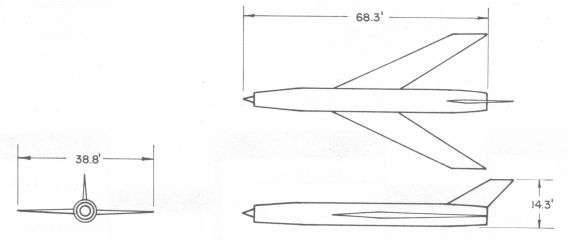
Scheme of the MX-775B Boojum rocket of the first version. Figure Designation-systems.net
The goal of the SSN-A-5 / MX-775B / Boojum project was to create a promising intercontinental cruise missile with supersonic flight speed. In accordance with the initial requirements, the Bujum product was supposed to carry a payload weighing up to 5000 pounds (about 2300 kg) and deliver it to a distance of 5000 miles (more than 8000 km). By the end of the autumn 1946 of the year (according to other data, a year later), the engineers at Northrop completed the first version of the MX-775B project. By this time, the main features of the rocket design were identified, with the help of which it was planned to ensure the fulfillment of the stated requirements.
As planned by the authors of the project, the new rocket was supposed to have a cylindrical fuselage of high elongation with a tapered nose and frontal air intake, equipped with a conical central body. The rocket should have been equipped with a middle-wing swept wing of a relatively small elongation, with the rear edge of the wing tips should be at the level of the tail section of the fuselage. The plumage of the rocket was to consist only of the keel. In the nose and middle parts of the fuselage it was proposed to place the control equipment, the warhead, and a set of fuel tanks. The tail must have a turbojet engine with the required thrust parameters.
Such a construction airframe implied the use of an unusual control system. For yaw control, it was proposed to use the rudder on the keel, and the pitch and roll should be changed with the aid of elevons on the rear edge of the wing. Thus, the promising cruise missile, despite the use of the swept wing, should actually have been built according to the tailless pattern. J. Northrop is known for his experiments in the field of non-standard schemes of aircraft: thus, the Boojum rocket was to become another version of the implementation of unusual layout solutions.
The rocket was supposed to have a total length of 68,3 feet (20,8 m), a wing span of 38,8 feet (11,8 m) and a total height of 14,3 feet (4,35 m). Estimated weight, engine type, combat unit and flight data of the first version of the “Bujum” are unknown.
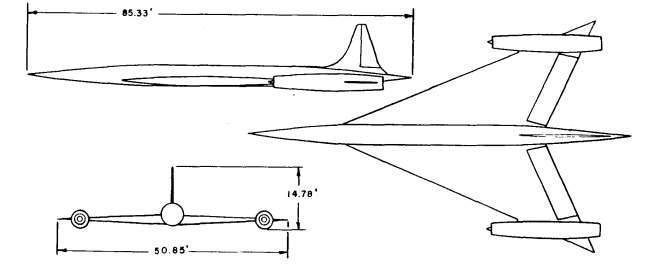
The second version of the Bujum rocket. Figure Designation-systems.net
At the end of 1946, the US military decided to cut defense spending. One of the ways to save was the closure of unpromising projects. The military experts reviewed the submitted documentation for the MX-775A and MX-775B projects and made their decision. It was necessary to stop work on the Snark subsonic rocket project and focus on supersonic Boojum munitions. J. Northrop and his colleagues did not agree with this decision. They initiated negotiations on the future of promising projects.
According to the designers, the Snark project differed from Bujum in great prospects, and therefore its development should be continued. The result of the negotiations was a compromise solution. The military approved the continuation of the SSN-A-3 / MX-775A project. In the future, this development reached the stage of testing and, after overcoming a number of difficulties, even managed to get into the troops. The second project of a strategic cruise missile was transferred to the category of research programs that could have an impact on the further development of weapons.
Focusing on the MX-775A project, Northrop Aircraft was forced to reduce the number of professionals involved in a supersonic rocket. Because of this, the MX-775B project has been developed for quite a long time and with noticeable difficulties. As a result, a new version of the promising rocket, which had significant differences from the first version, was developed only by the beginning of the fifties. It should be noted that not only the priority of the project, but also serious processing of the structure affected the timing of its creation. In fact, it was decided to re-develop the rocket, abandoning the main ideas of the previous project.
Calculations showed that with the current level of development aviation and rocket technology, the first version of the Boojum project will not ensure compliance with the requirements for payload mass, speed and flight range. It was necessary to change the design of the rocket and review the composition of the equipment proposed for use. The result of this was the emergence of a new version of the project. Since the work was in the nature of preliminary elaboration of new ideas, this version of the rocket did not receive its own designation. It is almost always referred to as the “late MX-775B.”
In an updated form, the Boojum rocket was supposed to be a projectile with an automatic control system and a twin-engine powerplant. It was proposed to use a cigar-shaped fuselage of large elongation, equipped with a keel. The project also implied the use of a low-lying triangular wing with a large sweep. In the end parts of the wing provided for the installation of two engine nacelles for turbojet engines. On the rear edge of the wing there were elevons for roll and pitch control. There was also a classic rudder on the keel.
The total length of such a rocket was 85 feet (about 26 m), the wingspan was determined at the level of 50 feet (15,5 m). Overall construction height is less than 15 feet (4,5 m). The estimated launch weight of the rocket was 112 thousand pounds (about 50 tons). The power plant was to consist of two turbojet engines such as J47 or J53.
The launch of the SSM-A-5 rocket of the second option was proposed to be carried out using a launcher based on a so-called. rocket sled. A trolley with mounts for a rocket equipped with solid-fuel boosters was supposed to move along special rails. When the cart reached a given speed, the rocket could detach and rise into the air. Then the flight was carried out using its own turbojet engines. The option of launching a cruise missile with the help of a Convair B-36 bomber was considered. He had to raise the rocket to a predetermined height, after which she could fly to the target on her own.
At the beginning of an independent flight, the rocket at subsonic speed was supposed to rise to a height of about 21 km. Only at this altitude did acceleration go up to the maximum speed that was maintained until the goal was reached. The maximum speed of such an aircraft, according to calculations, reached M = 1,8. Estimated range determined at the level of 8040 km. For a flight over such a distance, it was proposed to use internal fuel tanks, as well as an additional external one, discharged after the production of fuel.
In the forward part of the fuselage, the Bujum rocket was supposed to carry a nuclear or thermonuclear warhead. The type of this device was not specified, but it was possible to transport a product weighing up to 2300 kg. In the foreseeable future, the industry was to create nuclear and thermonuclear warheads with suitable dimensions and weight.
It was proposed to launch a missile at a target using an astroinertial navigation system. The main guidance tasks were solved with the help of an inertial system, and in addition, the “star” correction mode was provided. Work on creating such systems started in 1948 year and dragged on for several years. In the future, similar equipment was proposed to be used as part of the SSN-A-3 / MX-775A rocket.
Due to the higher priority of the Snark project, the development of the Bujum was carried out slowly and without much effort. As already mentioned, the second version of the project was ready only at the beginning of the fifties. Shortly after completion of the development of this version of the rocket, in 1951, the military again reviewed the submitted documentation and made another fateful decision.
By 1951, the air force realized that the MX-775A project faced a number of serious problems. There were difficulties with the development, production and operation of a variety of components and assemblies, because of which the further development of the project was called into question. At the same time, the draft subsonic rocket was much simpler than the second development. Thus, further work in the framework of the SSM-A-5 project could be faced with even more serious difficulties. The alleged problems were so serious that further work on the project was considered inappropriate even before they began.
In 1951, the military decided to continue the development of the MX-775A subsonic rocket, and the design of the supersonic MX-775B should have been halted due to the lack of real prospects. Northrop Aircraft companies have ordered to focus all efforts on the Snark cruise missile. This project was eventually brought to the test and mass production. Moreover, the Snark missiles for some time even were in service and were on combat duty.
Due to the closure of the project at the preliminary development stage, the Boojum missiles were not built or tested. These products remained on paper, not having a chance to show their characteristics or show negative traits.
However, as far as is known, the developments under the project MX-775B “Bujum” were not wasted. Documentation on this development, as well as on several other missile projects, was soon used to create a new strategic cruise missile. Some ideas and technical solutions created by the staff of J. Northrop were used in the project of the SM-64 Navaho developed by North American. The Navajo rocket was able to reach the tests, but failed to show itself from the good side, which is why the project was closed.
On the materials of the sites:
http://designation-systems.net/
http://fas.org/
http://astronautix.com/
http://secretprojects.co.uk/
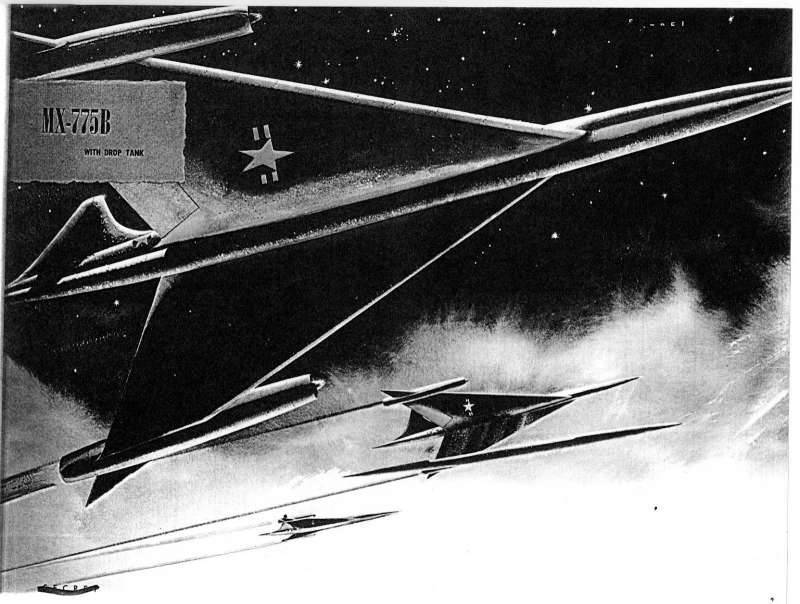
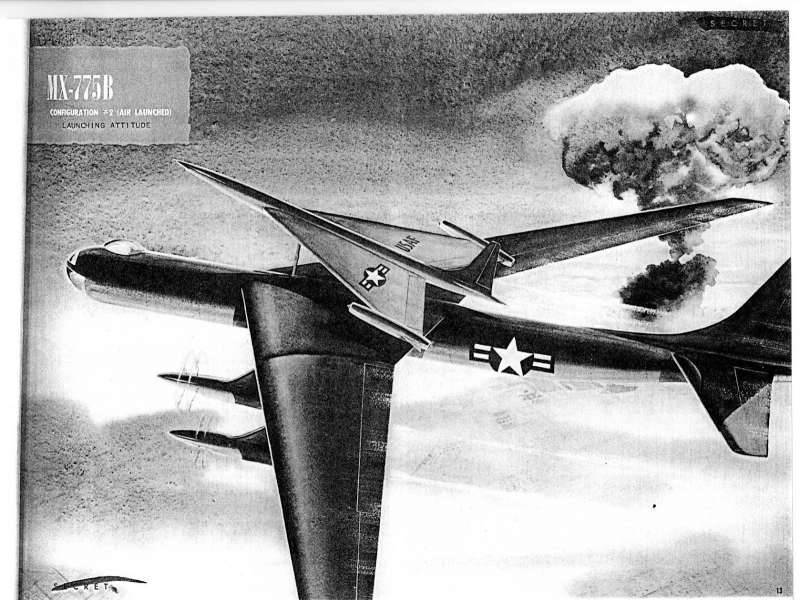
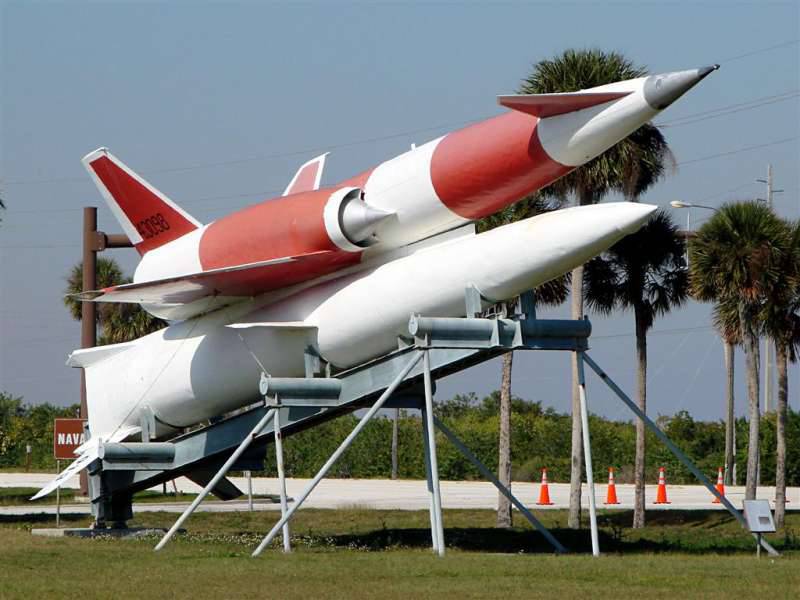
Information